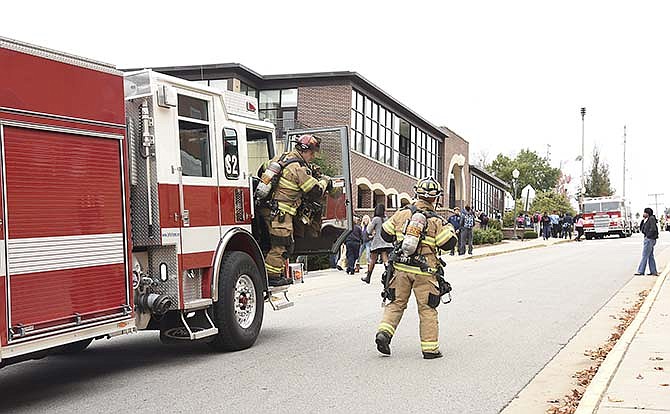It's unclear whether the Jefferson City Council will again take up the issue of vacating Chestnut Street at its meeting Monday, but many neighborhood residents have made clear they want to see traffic issues addressed before the street is closed.
At the Oct. 19 City Council meeting, council members discussed a bill to vacate Chestnut Street - from Dunklin Street to Atchison Street, to allow Lincoln University to create a pedestrian plaza - before 3rd Ward Councilman Bob Scrivner, who also is the bill's sponsor, opted to place it on the informal calendar.
Scrivner said Thursday he was unsure of what would happen Monday and whether the bill would be voted on, but said the council had heard residents when they asked for a plan to address neighborhood traffic issues.
"I think we're moving in the direction of the planning and exploration," Scrivner said. "I think we realized that there was maybe even a bigger issue than what we were sensitive to so we definitely want to deal with the safety issues in the area and make sure that we're meeting the needs of not only Lincoln University but the community."
After initially seeking a full vacation, Lincoln University agreed to more of a partial vacation, where the university would be required to provide electronically-operated gates to the pedestrian plaza. The gates would be closed 8:30 a.m.-5 p.m. Monday through Friday, but still allow deliveries and emergency vehicles access to the street.
The agreement would lay out a process of vacating the street in phases, where the first phase would require Lincoln to install the new gates. Within seven days of that installation, the partial vacation would begin.
Once the gates are installed, the university would take on street maintenance responsibilities, including snow removal, parking enforcement and repairs.
Once the Lafayette Street interchange is complete, which is expected by late 2016, and Lincoln has completed the designs and fundraising for the pedestrian plaza, the city would completely vacate the street within 30 days. At that time, Lincoln could completely close the street.
The agreement also stipulates the university would contribute up to 50 percent of the cost toward improving Atchison and Locust streets "at some future time," as well as pledge to cooperate with the long-range planning of the community around the university.
Scrivner made the decision to put the bill on the informal calendar after several council members discussed adding another requirement to the agreement before a full vacation could be triggered. That requirement would have city staff prepare a plan to address traffic concerns on Clark Avenue and associated streets before Chestnut Street could be vacated, which likely would address many residential concerns in the neighborhood.
Before moving the bill to the informal calendar, the council heard from 54 people who spoke on the issue during the meeting. Of those who spoke, 36 were in favor of vacating the street and 18 were against. Of the 36 in support, a majority were either students or employees of Lincoln University, while a majority of those opposed were residents of the neighborhood.
Most of those against the vacation brought up traffic issues on Clark Avenue, calling it too dangerous to handle additional traffic from Chestnut Street. Residents also noted poor sight distances, "awkward" intersections and a lack of pedestrian crossings.
But for city staff, Clark Avenue has never had a pattern of accidents that would trigger a study of the area. Public Works Director Matt Morasch and City Engineer David Bange said they typically review the safety of a particular street if there are five accidents within one year.
But at the Clark Avenue and Dunklin Street intersection, there have been eight accidents in the past six years, Bange said, and of those accidents, only about four could be considered to be caused by an issue with the intersection itself.
"There really isn't a pattern at all," Bange said.
Morasch said the city has not studied Clark Avenue and some of the issues residents brought up would be difficult to address. Morasch noted the issue with sight distances is often caused by parking in older neighborhoods and while that could be addressed by removing a section of parking, many older homes have no off-street parking for residents, which could create a problem.
Both Bange and Morasch said it's difficult to tell if more traffic would be diverted to Clark Avenue than Lafayette Street or any other adjacent street if Chestnut Street were closed at this time. The new Lafayette Street interchange is expected to change traffic patterns in the area when it opens in about one year, they said, and it will take a few months to see how people adjust their routes.
And any attempt to address traffic patterns in the area will be a similarly lengthy process, Morasch said, as traffic studies take both time and money. Plus, Scrivner said, no plans have been made for that area and no money has been budgeted for any projects like that as of yet.

